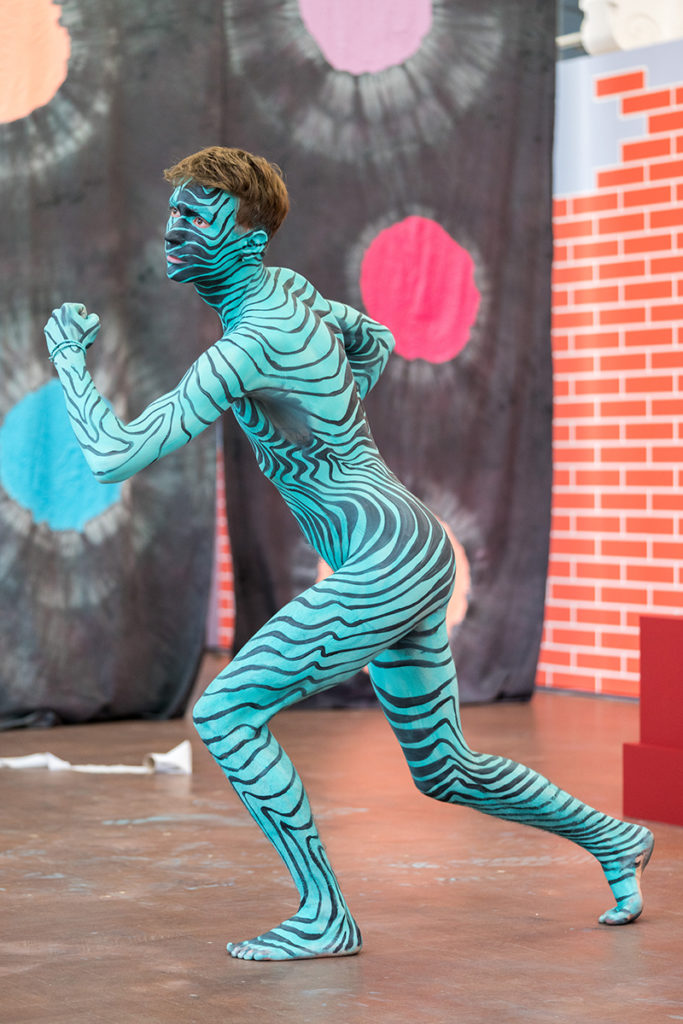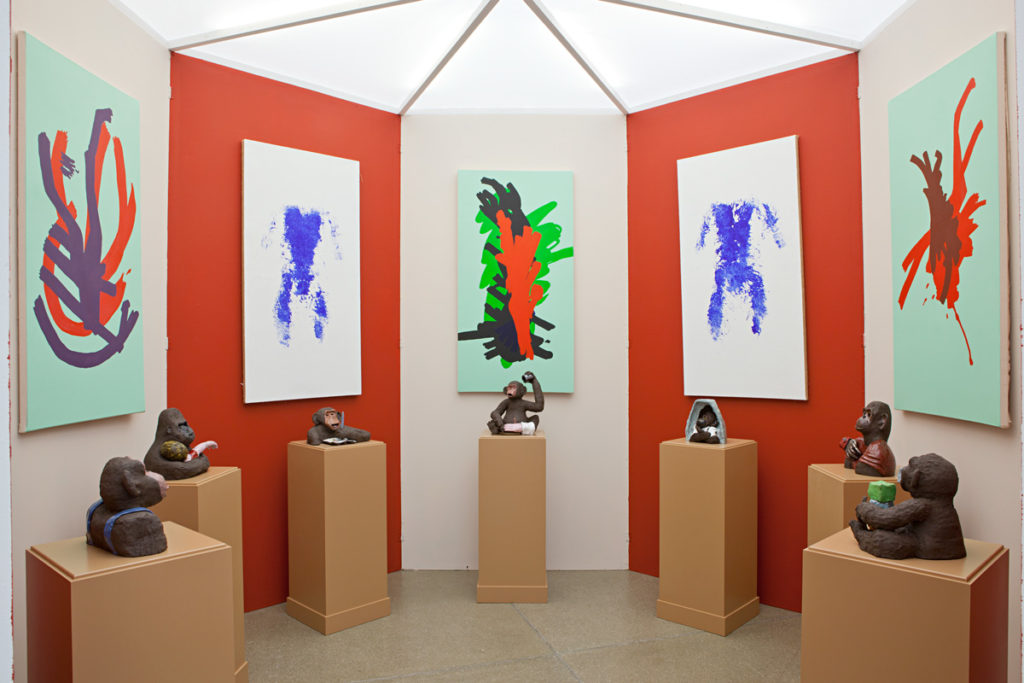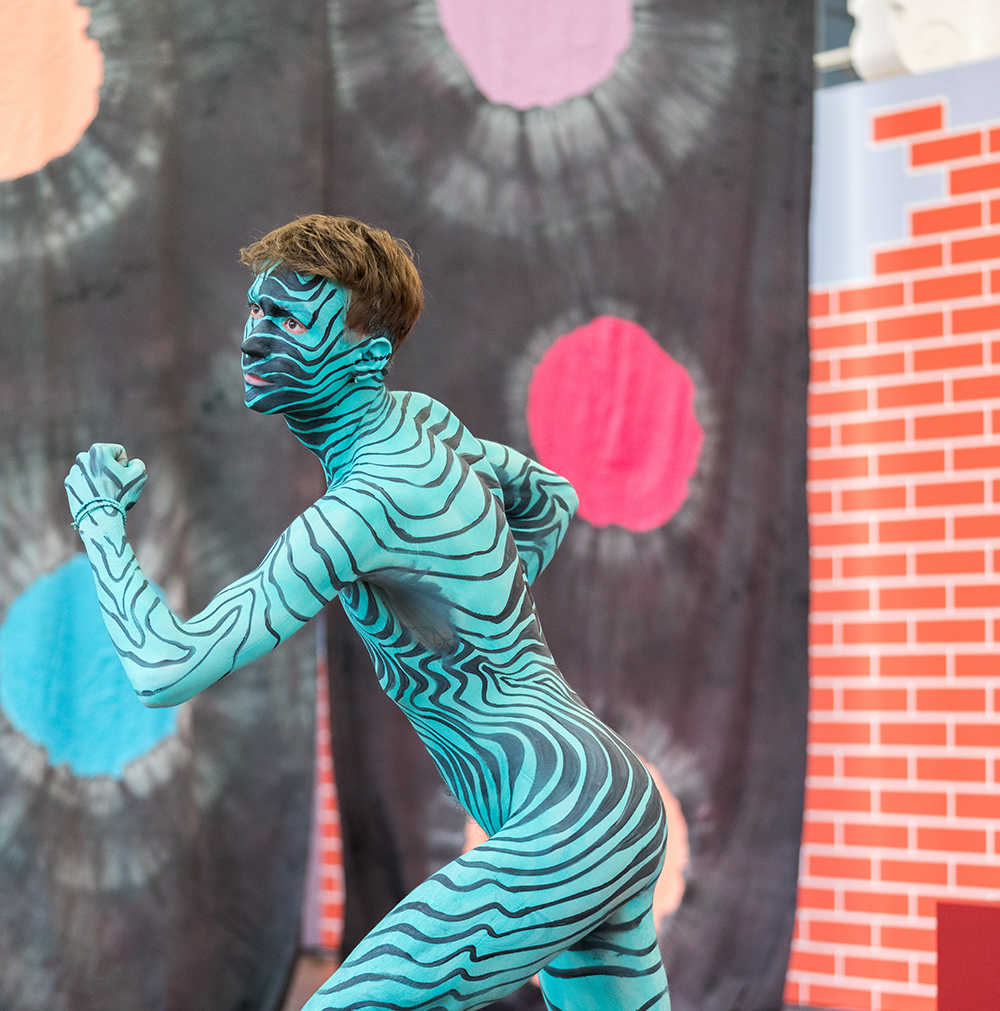I hate feeling instrumentalised, being invited to fill an empty space, to be an entertainment for an event, and give credit to a vain capitalistic context. Art is not a cherry on a cake.
For Guillaume Pilet variety is the spice of life and art, and he wants his work to meet his audience in varying, unpredictable ways.

Take us to the beginning of your story. How did your tryst with art begin?
Let’s go back to my childhood. My father was a painter and I started drawing in a corner of his studio. I was five years old when he suddenly died. Since then, when people saw me drawing, they would say I inherited my dad’s skills. They made an artist out of me. I developed an intimate and uncanny relationship with painting.
I grew up surrounded by the paintings of my late father. When I was eight years old, I discovered Modigliani’s paintings in a museum and decided to become a painter. At the age of 10, I painted my first painting on canvas, a pumpkin on a red drape. This absurd composition is re-enacted in some of my recent artworks.

Dream A Little Drama
Tell us about the evolution of your practice over the years.
As its main protagonist, I might not be in the best position to consider the evolution of my art. I may lack distance. But I can say that since the beginning I conceived my practice as a whole, as a kind of “meta-artwork”. I envisage every object and every exhibition or project as a portion of a whole. My exhibitions are thought as encompassing displays to be experienced. The main evolution of my work is the multiplicity of the contexts in which it appeared, such as long duration performances or an experimental pop opera, a colouring book for children or a watch, the construction of temporary ceramic kilns with students, fascinating projects in Brazil and UK, exhibitions in big museums or tiny artist-run spaces and so on.

What were your biggest lessons and hurdles along the way? Which is the most memorable moment?
I found out that I was definitely more interested in building a work than a career. The career is to serve the work, to make it happen in the best ways possible.
I learned that exhibitions can be repetitive. At some point I got a bit bored. I had the sensation of being invited to fill empty spaces with my artworks and then nothing more was meant to happen. That might explain why it’s so important for me to work very specifically with each context, the configuration of the space, how to make it mine. Also, I started working on performative projects. It is important for me to vary the ways my work meets the public. I want to create different kinds of experiences.
What inspires you? Take us through your process and frames of references?
I consider my work as an ongoing process, fed with my everyday life and constant curiosity. I’m inspired by new encounters and long term friendships. I love to travel and work in different contexts. I’m thrilled when I am invited to collaborate on unexpected projects. I’m very interested in architecture and how the living spaces are conceived. I’m fascinated by how you can find similarities within different cultures. Most of all, I love to learn new things, about anything. I ask many questions. Sometimes, I think the questions are more important than the answers. I don’t like definitions to be too narrow. I prefer to find a kind of logic through chaos.

What is the primary role of an artist? How do you describe yourself in the context of challenging people’s perspectives via your work?
I don’t want to speak for all artists. I guess my role as an artist is to create and give the best shape to my ideas, so it appears most authentically in contemporary society. There are so many pictures everywhere. The world is very loud and full. I don’t feel the necessity to be part of the rush, and to respond to the urge of appearing constantly. I have my own biological urges, driven by a desire to experience life and art as much as possible until the day I die.
How do you balance art and life?
Art is my entire life. It’s a bit sad to admit it. I’m totally involved in my practice. But I think art is a proper way to live your life on earth. Your lifestyle becomes quite interesting, even with less money. Society tends to tell us all the time that wealth is the way to rate achievement, but that is shallow.
How do you deal with the conceptual difficulty and uncertainty of creating work?
Uncertainty is the main dish of my every meal.

How does your audience interact and react to the work?
I don’t want to answer this. I think my audience should. I always try to keep room for the viewer. My stories should belong to everybody. It’s important for me to create ambitious project within reasonable budgets. If someone reacts to my work saying, “I could do that, I think”, that’s great! You should!
What are you looking for when you look at other artists’ work? Which shows, performances and experiences have shaped your creative process? Who are your maestros? Whose journey would you want to read about?
My favourite artists are always amongst my friends, people with whom I can debate and share ideas. I need to talk a lot. As an art student, I spent all my time at school discussing with other students and professors. However, I worked in my own studio at home. What’s the point of having a place to work or to show the work, if you don’t have anybody to talk about the work with?I’m also an art addict. As a teenager, I was a geek of Italian Renaissance, and I probably still am. I’m a big fan of Californian artist Mike Kelley. I’m very impressed by women artists like Louise Bourgeois, Niki de Saint Phalle, and Georgia O’Keeffe.

How does your interaction with a curator, gallery or client evolve? How do you feel about commissions?
I like long term relationships. It’s a gift to be able to work with the same people over the course of years, with each one helping in the evolution and nourishment of the work. As I said before, I love to exchange, to share. I like commissioned worked and collaborations when the context is enthralling. It’s interesting to create in a very specific context, with given elements and necessities. Recently, I worked on a watch project and it gave me new ideas for my paintings. Moreover, it can be a good way to address a new public.
However, I hate feeling instrumentalised, being invited to fill an empty space, to be an entertainment for an event, and give credit to a vain capitalistic context. Art is not a cherry on a cake.
What are you working on now? What’s coming next season?
I’m currently in Shanghai developing new projects. It’s a captivating city where I found love last year. I will soon go back to Switzerland and present a new performative project – Before We Met. Also, I’ll have a solo exhibition at the Barbara Seiler Gallery in Zurich in early January. I want to experiment with many new painting projects and hope to work on large scale wall paintings.












Add Comment